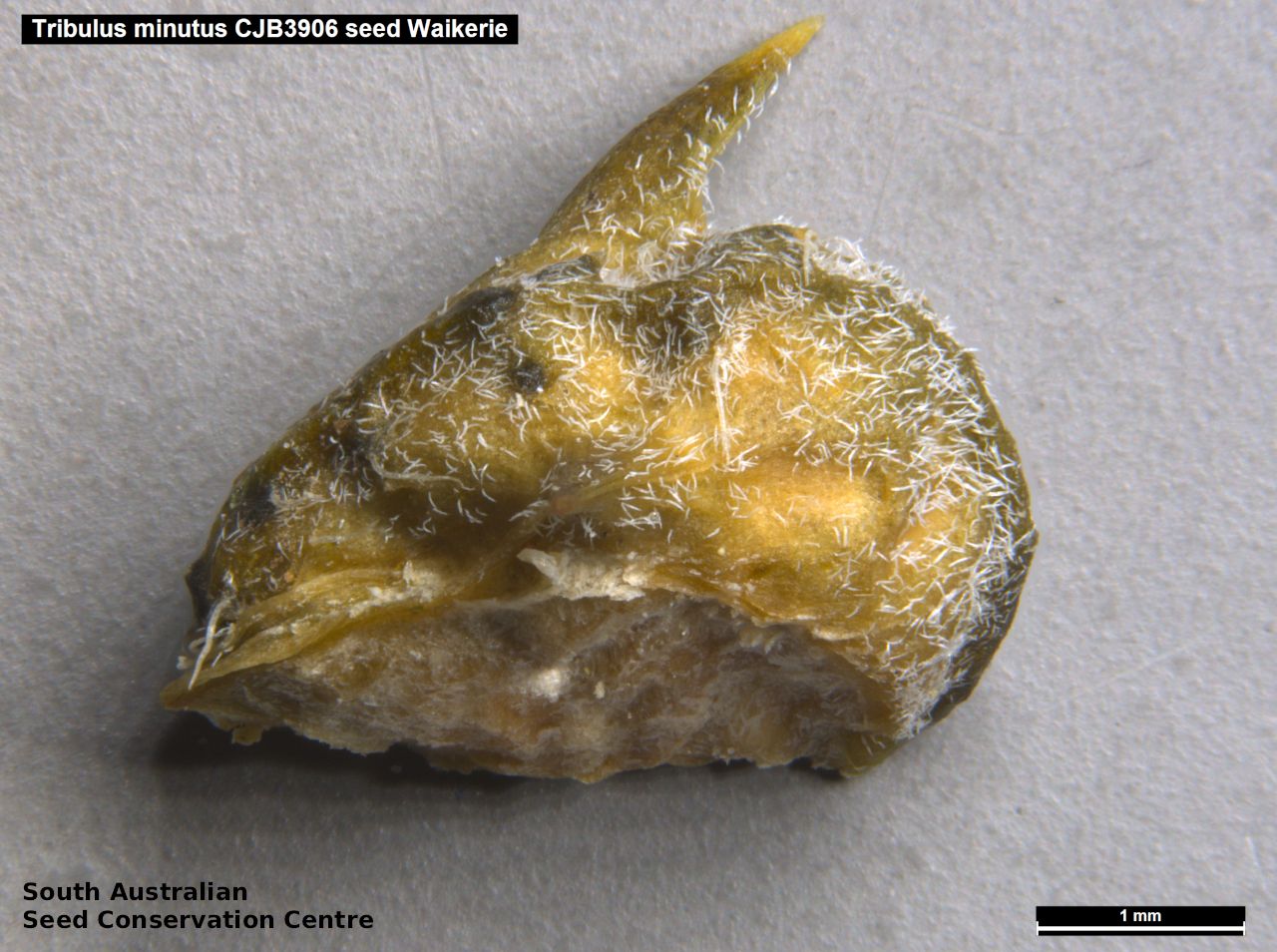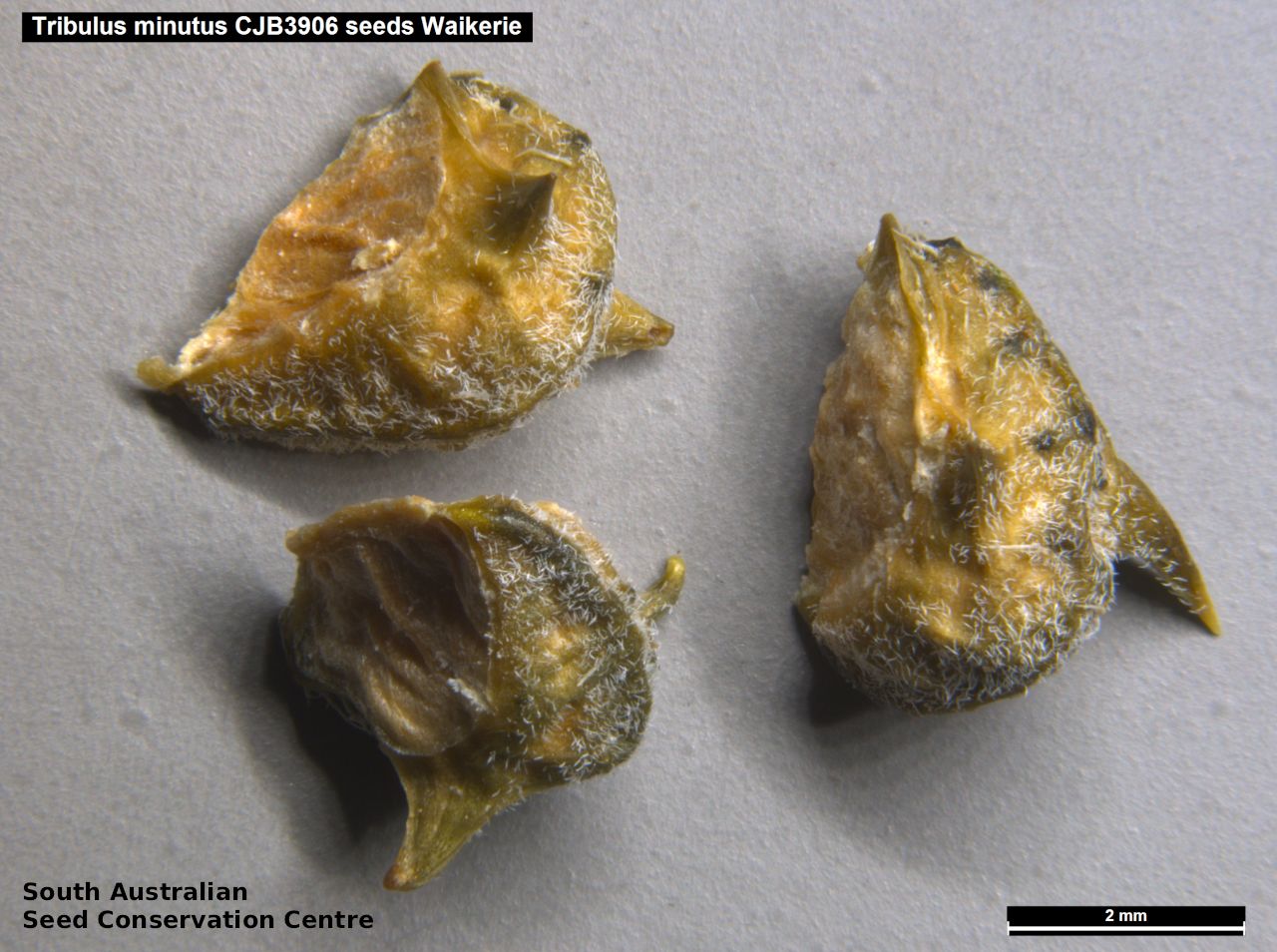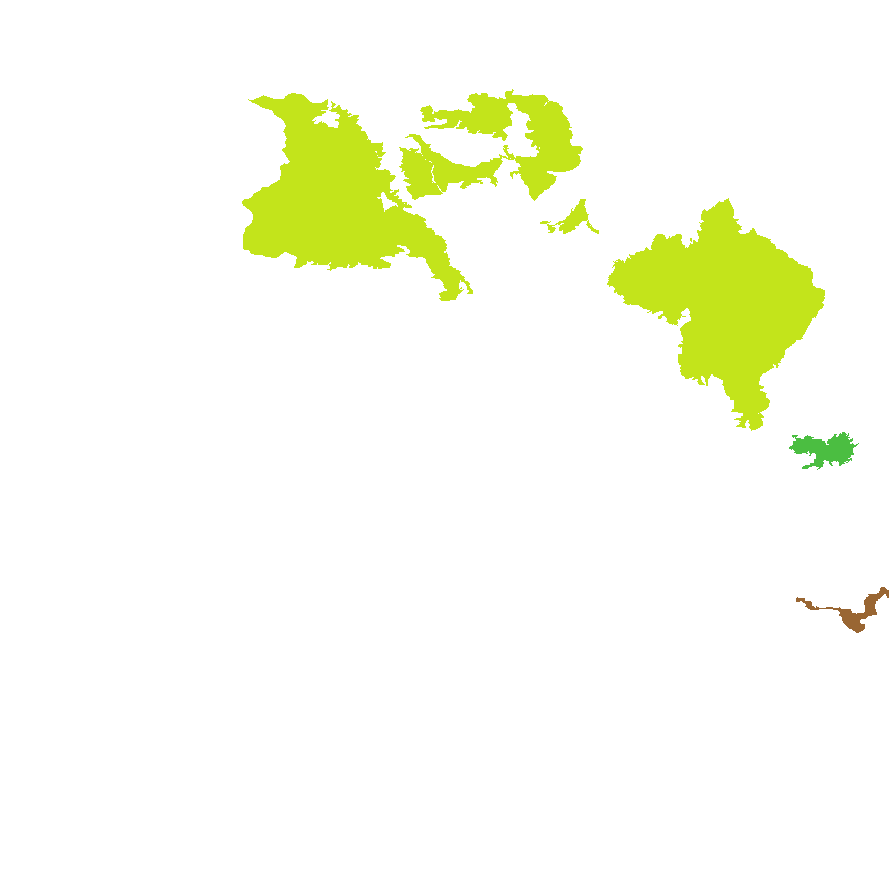



Prior names
Tribulus acanthococcus, questionably
Kallstroemia minuta
Etymology
Tribulus from the Greek 'tribolos' meaning water-chestnut and translated into Latin as 'tribulos' which originally meant the caltrop, a 4-pointed military instrument, employed to lame advancing cavalry, and the name also applied to Tribulus terrestris. Minutus from Latin meaning very small; possible referring to the small fruit.
Distribution and status
Found scattered across the eastern part of South Australia, growing in low woodland and possibly disturbed sites. Also found in all mainland states. Native. Common in South Australia. Uncommon in Western Australia and Victoria. Common in the other states.
Herbarium regions: North Western, Lake Eyre, Nullarbor, Gairdner-Torrens, Flinders Ranges, Eastern, Eyre Peninsula, Northern Lofty, Murray
NRM regions: Alinytjara Wilurara, Eyre Peninsula, Northern and Yorke, South Australian Arid Lands, South Australian Murray-Darling Basin
AVH map: SA distribution map (external link)
Plant description
Prostrate herb with branches to 60 cm long covered in velvety hairs. Leaves with 5 to 7 pairs of leaflets to 8 mm long and 2.5 mm wide. Flowers yellow with 5 petals to 5 mm long. Flowering October to April. Fruit slightly hairy woody ball with 5 segments each to 4 mm long, with a wrinkled surface, with 2 short divergent spines to 2 mm long in the middle third of the segment and 2 very short basal spines pointing downwards. Seeds are contained within the woody fruit. Seed embryo type is spatulate fully developed.
Seed collection and propagation
Collect fruits bewteen January and June. Collect fruits that are hard and turning brown. Some fruits maybe split and laying on the ground. Be careful when collecting as the fruits are spiny. No further cleaning is required if only fruits are collected. Store the seeds with a desiccant such as dried silica beads or dry rice, in an air tight container in a cool and dry place. Seed viability is usually high. This species have physical and physiological dormancies that needs to be overcome for the seed to germinate.